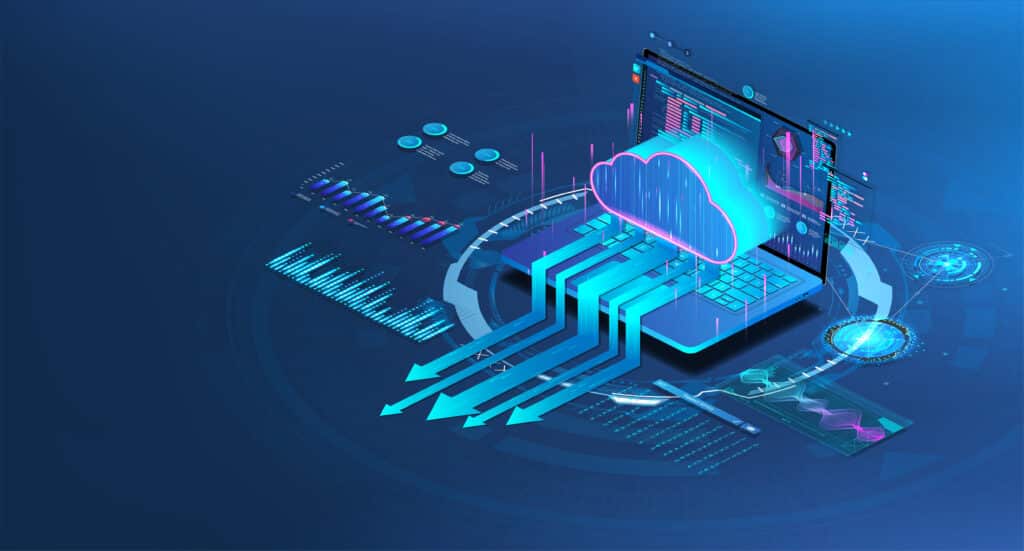In 2024, we have entered an era that has, for the most part, been completely dominated by digital transformation. As Software as a Service (SaaS) applications continue to emerge as a pillar for businesses on the hunt for optimal efficiency, scalability, and innovation, there’s no denying that there has been an increasing dependence on cybersecurity. And that dependency is more critical than ever.
Today, we want to not only ask, but answer the question: why is cybersecurity crucial for SaaS companies?
First, let’s cover the basics.
What is a SaaS company?
SaaS companies have essentially revolutionized the traditional way software is delivered by providing users with access to their apps and services via the internet. Contrary to the more conventional software installations, SaaS companies have been able to completely eliminate the need for users to invest in pricey hardware or maneuver through complex and time consuming installations and updates.
Since SaaS applications are housed centrally, they provide an accessible route to their services and data, all through a basic web browser. Not only does this offer more accessibility, but also flexibility, cost-effectiveness, and unparalleled scalability. (After all, the world wide web knows no bounds, meaning SaaS companies could be just on the brink of a new wave of technological innovation.)
SaaS platforms span across of wide variety of industries and functions, from customer relationship management (CRM) and human resources to project management and enterprise resource planning (ERP). Regardless of their industry or function, SaaS companies often handle sensitive information, including customer data, financial records, and proprietary business data, meaning that a data breach could lead to severe consequences, both on the legal and reputation fronts.
Unforeseen Threats
SaaS companies, with their troves of invaluable data stored in the cloud, have become an alluring and irresistible target for cyberattacks. However, cybersecurity’s role in SaaS functionality is not just about protecting its data but is also about securing the very fabric that upholds it.
Speaking of “fabric,” picture SaaS applications as an intricately woven tapestry made up of equally complex interconnected services and third-party integrations. To an outsider, it’s something to marvel at with all of its connected threads and lines forming patterns and beautiful imagery. But to those who know what to look for, it’s a messy web of functions that can all bring about their own instances of opportunity and vulnerabilities.
It’s this tapestry in particular why cybersecurity measures must extend beyond the immediate SaaS platform, fully encompassing the entire complex ecosystem in order to create a unified defense against all potential threats.
Ever-Evolving Battlefields
A SaaS company’s proactive approach to cybersecurity is marked by regular updates, stringent patch management, and systematic security audits.
But what do those mean?
Regular updates ensure that software and systems are equipped with the latest defenses, addressing vulnerabilities, and enhancing their overall resilience. Stringent patch management involves promptly applying security patches to address any identified weaknesses and minimizing the window of opportunity for potential breaches. Finally, systematic security audits are a comprehensive assessment, judging the entire infrastructure to identify and rectify any existing vulnerabilities.
However, the reality is that hackers and thieves are continuously evolving their tactics, meaning that it is vital for SaaS companies to be able to adapt and uphold their defenses against this ever-changing battlefield. They can do so by leveraging innovative technologies and embracing a more modern, proactive mindset that anticipates, rather than reacts to, the evolving cybersecurity realm. Upholding defenses in this ever-changing battlefield demands a dynamic approach, one that not only mirrors the agility of cyber attackers, but also ensuring that the SaaS applications always remains one step ahead.
Conclusion
The ever-present, ominous threat of ransomware, phishing schemes, and data breaches have and will always loom, requiring a robust and continually improved cybersecurity system to act as a bodyguard against these unseen adversaries and mitigating potential operational disruptions.
Cybersecurity is not merely a technological accessory but an integral component that defines any industry’s resilience, credibility, and identity in an era where the digital realm shapes the trajectory of businesses and economies alike.



